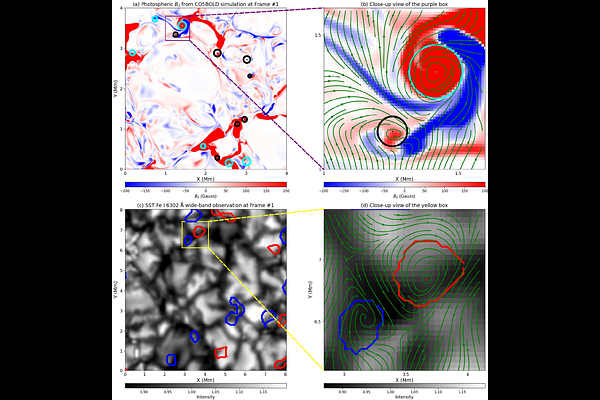Improving the Γ-functions Method for Vortex Identification

Improving the Γ-functions Method for Vortex Identification
Quan Xie, Jiajia Liu, Robert Erdélyi, Yuming Wang
AbstractVortices have been observed at various heights within the solar atmosphere and are suggested to potentially play great roles in heating the solar upper atmosphere. Multiple automated vortex detection methods have been developed and applied to detect vortices.We aim to improve the $\Gamma$-functions method for vortex identification by optimizing the value of $\Gamma_{1min}$ and the approach to calculate $\Gamma_1$ and $\Gamma_2$ used to determine vortex center and edge. In this way, we can detect vortices more accurately and enable more statistical studies that can improve our knowledge of the generation and evolution of vortices in the solar atmosphere. We apply the automated swirl detection algorithm (ASDA, one representative of $\Gamma$-functions method) with different parameters to various synthetic data, with each containing 1000 Lamb-Oseen vortices, and search for the optimal $\Gamma_{1min}$ and kernel size when calculating $\Gamma_1$ and $\Gamma_2$. We also compare another detection method using simulation and observational data to validate the results obtained from the synthetic data. The best performance is found with the Optimized ASDA, which combines different kernel sizes (5, 7, 9, and 11) to calculate $\Gamma_1$ and $\Gamma_2$ with a fixed $\Gamma_{1min}$ = 0.63 to detect vortex center. We find that more vortices can be detected by the Optimized ASDA with higher location, radius, and rotation speed accuracies. The above results are further confirmed by comparing vortices detected by the Optimized ASDA and the SWIRL method on CO5BOLD numerical simulation data and SST observational data.